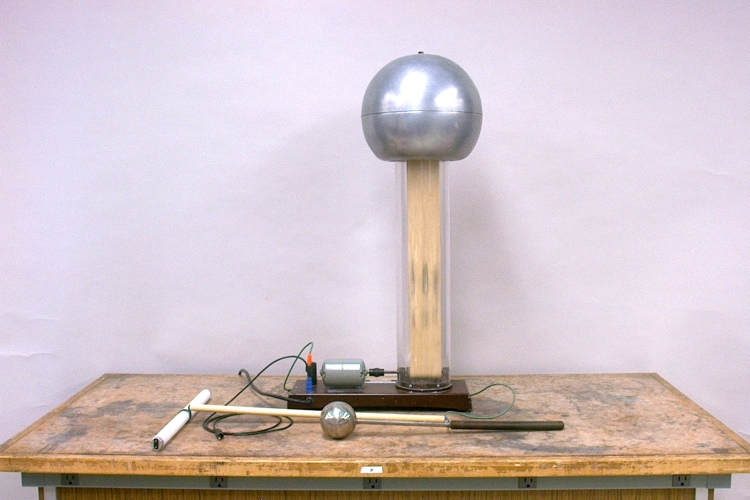
Turn on the Van de Graaff generator. Now bring one end of the fluorescent tube near the dome of the generator. Breakdown occurs inside the tube, causing it to glow. If you now ground the far end of the tube, this increases the potential difference between the two ends, and the whole tube glows. Important! Always use the grounded wand to turn the generator on and off.
Demonstration 56.45 -- Sparks, describes how a Van de Graaff generator works. Briefly, a motor-driven belt carries charge that has been deposited on it via corona discharge from a row of needles at the bottom of the generator, below the drive pulley, up to a second row of needles at the top, inside the dome, where via corona discharge, the charge is deposited on the dome. The generator can thus charge its dome to very high potentials.
Next to the Van de Graaff generator is a fluorescent tube. When you bring one end of the fluorescent tube close to the dome of the generator while it is running, the large electric field around the dome of the generator creates a potential difference between the ends of the fluorescent tube that is great enough to cause the gas inside the tube to break down. The resulting discharge causes the fluorescent tube to glow. Since the end of the fluorescent tube that is far from the dome of the generator is not connected to anything, it floats at a fairly high potential. If you ground it by connecting it to the ground jack on the base of the Van de Graaff generator (with the alligator clip lead shown coiled beneath its handle), this increases the potential difference between the two ends of the tube when you again hold the other end near the generator’s dome, and the tube glows more intensely. The tube lights up over its whole length, whereas before it did not.